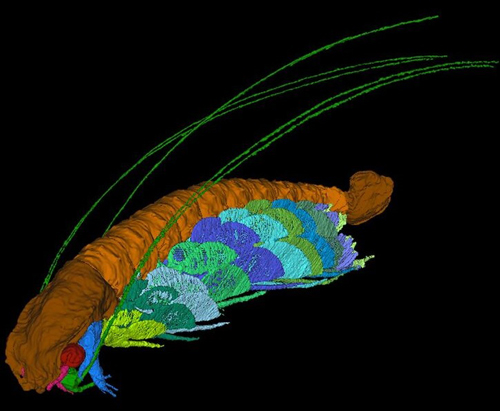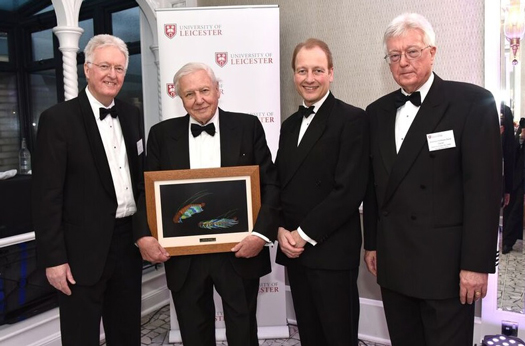Newly Described Silurian Fossil Honours the Remarkable Sir David Attenborough
Fossil Discovery Named in Honour of Sir David Attenborough’s 90th Birthday
Sir David Attenborough has been honoured by an international team of scientists who have named a newly described Silurian arthropod after the veteran broadcaster and naturalist. Sir David has had a number of new species named in his honour, this 430 million-year-old, distant relative of today’s crabs and lobsters joins a long list of flora and fauna that includes wild flowers and a Jurassic pliosaur (Attenborosaurus conybeari).
To read an article about a kitten-sized marsupial lion named after Sir David: Attenborough’s New Kitty”.
Honouring Sir David Attenborough – Cascolus ravitis
Picture credit: Professor David Siveter et al
Sir David grew up in Leicestershire, he and his family lived on the campus of the former University College Leicester, where his father was the principal. As a boy, Sir David often explored the exposed Jurassic outcrops, near to his Leicester home hunting for fossils. His love of the local countryside and the animals and plants that surrounded his home, fuelled his passion to become a scientist.
A Three-dimensional Arthropod Fossil
The fossil specimen, which measures less than ten millimetres long, is described as “exceptionally well-preserved in three-dimensions”. The researchers, which include scientists from Imperial College (London), Oxford University and Yale (United States), as well as Leicester University, have been able to identify the exoskeleton and other parts of the animal, such as the delicate antennae, legs and the compound eyes.
It has been assigned to the Crustacea sub-phylum and joins a remarkable fossil assemblage representing a marine biota preserved when ash from a volcano covered an ancient underwater ecosystem. The actual location of the fossil site is a closely guarded secret, the site can be found in the county of Herefordshire, close to the Welsh border. At this location, the limestone rock sequence is interrupted by a fine-grained bedding plane that represents ash from a volcanic eruption that smothered the seabed. The ash buried all the creatures in and around the seafloor at the time, creating a unique opportunity for palaeontologists to study this ancient habitat.
Professor David Siveter (Department of Geology, Leicester University), commented:
“Such a well-preserved fossil is exciting, and this particular one is a unique example of its kind in the fossil record, and so we can establish it as a new species of a new genus.”
Cascolus ravitis
The genus name is derived from “castrum” meaning stronghold and “colus” which translates from the Old English as “dwelling in”, terms from which the surname Attenborough is derived. The species name is a combination of “Ratae”, the Roman name for Leicester, “vita” which means life and “commeatis” a messenger.
Sir David Attenborough Receiving a High-Resolution Image of the Fossil Named in His Honour
Picture credit: Leicester University
Left to right: Derek Siveter, (University of Oxford), Sir David Attenborough, Professor Paul Boyle, President and Vice-Chancellor of University of Leicester and David Siveter, University of Leicester.
Honouring Sir David Attenborough
Speaking about his latest honour, the nonagenarian, who will be celebrating his 91st birthday in a few weeks’ time, stated:
“The biggest compliment that a biologist or palaeontologist can pay to another one is to name a fossil in his honour and I take this as a very great compliment. I was once a scientist so I’m very honoured and flattered that the Professor should say such nice things about me now.”
To read about other fossil discoveries from the Herefordshire site: The Kite Runner from the Silurian of England.
Prehistoric marine parasites: Prehistoric Parasites from the Silurian.
Sir David Attenborough has had a Genus of Jurassic Pliosaur Named in His Honour
Picture credit: Everything Dinosaur
To view models and replicas of marine reptiles: CollectA Age of Dinosaurs Models and Figures.
Everything Dinosaur acknowledges the help of a press release from Leicester University in the compilation of this article.
The research is published in the journal Proceedings of the Royal Society B (Biology).
Visit the Everything Dinosaur website: Everything Dinosaur.




